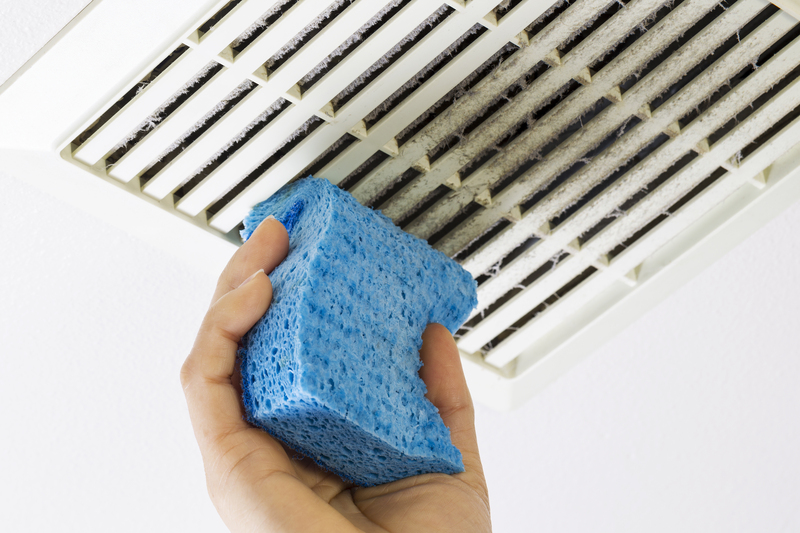The Role of Air Quality in Enhancing Comfort and Productivity
Posted on 26/09/2025
The Importance of Air Quality in Modern Workspaces
In today's fast-paced lifestyle, indoor environments dictate much of our daily experience, directly influencing our well-being and how efficiently we work. Of all the variables that define a healthy workspace, air quality stands out as a critical--but often underestimated--factor. From open plan offices to high-tech laboratories and home offices, the role of air quality in enhancing comfort and productivity is becoming a central discussion in workplace design, occupational health, and building management.

Understanding Air Quality: The Basics
Before discussing how air quality impacts productivity, let's clarify what 'air quality' really means. Air quality refers to the cleanliness and composition of the air, both in terms of visible and invisible pollutants. These can include:
- Particulate matter (PM2.5 and PM10): Tiny solids or droplets in the air, such as dust, pollen, and smoke.
- Volatile organic compounds (VOCs): Gases emitted by a wide array of products and materials, including paints and cleaning agents.
- Carbon dioxide (CO2): Exhaled by people and produced by burning fossil fuels; high levels can indicate inadequate ventilation.
- Other pollutants: Ozone, nitrogen dioxide, sulfur dioxide, and biological contaminants like bacteria, viruses, and mold.
High indoor air quality is typically associated with low pollutant levels, adequate ventilation, and optimal humidity. But why is this so important, especially in settings designed for productivity and comfort?
How Air Quality Affects Comfort and Worker Well-being
The Physiological Link Between Air Quality and Comfort
When we breathe in clean air, our bodies--and especially our brains--function at their best. Poor indoor air quality can quickly lead to discomfort, even at mild levels of contamination. Major comfort issues caused by poor air quality include:
- Dry eyes, throat, and skin
- Headaches and fatigue
- Coughing, sneezing, and respiratory irritation
- Difficulty concentrating
- Unpleasant odors and sensations of stuffiness
Such symptoms are often indicators of a phenomenon known as *Sick Building Syndrome*, where occupants experience health issues linked to the indoor environment. Studies consistently show that improving air quality leads to higher satisfaction rates among occupants and creates a more welcoming atmosphere.
The Psychological Impact: Mood, Well-being, and Productivity
Beyond physical symptoms, bad indoor air quality can have a direct psychological impact. High levels of CO2 and VOCs have been linked to:
- Low mood and chronic stress
- Poor cognitive performance and memory retention
- Decreased motivation and engagement at work
On the other hand, a workplace with fresh, well-circulated indoor air boosts mood, increases mental clarity, and fosters collaboration. Employees in such environments not only feel better but are motivated to perform better as well.
The Connection Between Air Quality and Productivity
How Clean Air Drives Performance
The role of air quality in productivity enhancement is well-supported by research. A renowned study from Harvard University found that cognitive scores were 61% higher in environments with improved indoor air quality. Key benefits include:
- Sharper Focus: Clean air keeps the brain well-oxygenated, reducing cognitive fatigue and distraction.
- Reduced Sick Days: Fewer pollutants mean fewer respiratory infections and allergies, resulting in lower absenteeism.
- Better Decision-Making: Tasks that require high-level thinking and analysis benefit from environments with low CO2 and VOCs.
Case Studies: Real-World Results
- Office Buildings: A study from the World Green Building Council revealed that enhancing ventilation rates improved workers' productivity by up to 11%.
- Schools: Students in classrooms with better air quality scored higher on tests, highlighting the direct link between clean air and cognitive ability.
- Manufacturing Sites: Proper filtration of airborne particles led to significant reductions in machinery downtime due to fewer contamination incidents, as well as improved worker safety and output.
Contributing Factors to Indoor Air Quality
It's crucial to understand what affects indoor air quality the most. Some influential factors include:
- Ventilation: Natural or mechanical exchange of air to dilute and remove indoor contaminants.
- Building Materials: Some synthetic materials release VOCs for years after installation.
- Cleaning Products: Many conventional cleaners emit fumes that degrade air quality.
- Humidity Levels: Too high humidity promotes mold growth, while too low causes discomfort.
- Occupant Density: More people means more CO2 and potentially more biological contaminants.
Addressing these factors is essential for maintaining high air quality standards in workplaces and ensuring that employees feel and perform their best.
Air Quality Management: Solutions and Strategies
Best Practices for Enhancing Indoor Air Quality
Improving air quality in the workplace is a multidimensional task. Here are proven methods to boost both comfort and productivity through better indoor air:
- Regular Ventilation: Ensure windows can open where possible, and invest in modern HVAC systems designed for frequent air exchange.
- Air Filtration: Use high-efficiency particulate air (HEPA) filters to capture fine particles and allergens.
- Monitor Air Quality: Install sensors for CO2, PM2.5, VOCs, and humidity to spot trends and take action quickly.
- Green Building Design: Incorporate natural materials and plants, which both improve air purity and psychological well-being.
- Smart Cleaning Protocols: Use eco-friendly cleaning products and minimize chemical emissions.
- Maintain Optimal Humidity: Aim for indoor humidity between 30-50% to prevent mold growth and excessive dryness.
Leveraging Smart Technology
Technological advancements have revolutionized air quality management. Smart thermostats, real-time monitoring systems, and advanced filtration all allow for:
- Consistent maintenance of optimal CO2 and particulate levels
- Automated responses such as increased ventilation when pollution rises
- Alerts and reports to help building managers and occupants stay informed
By integrating these tools, businesses can ensure a continually clean environment that supports high comfort and output.
Air Quality and Remote Work
With the rise of home offices, air quality at home deserves special attention. Many homes lack the filtration and ventilation of modern offices, posing risks to sustained performance.
- Invest in portable air purifiers for workspaces
- Open windows regularly to allow fresh air circulation
- Avoid smoking, burning candles, or using strong-smelling chemicals near your workspace
The Economic Case: Why Businesses Should Care
Improving indoor air quality for productivity isn't just about health--it's a smart business decision.
- Lower Health Care Costs: Fewer sick days and occupational illnesses translate to significant savings for employers.
- Talent Attraction and Retention: A comfortable, healthy workplace is a major draw for talented employees and reduces turnover.
- Enhanced Reputation: Companies that prioritize air quality demonstrate a commitment to worker well-being and social responsibility.
Investing in air quality solutions pays for itself through increased productivity, lower costs, and a better corporate image.

Future Trends: Building for Clean, Productive Air
The future of workplace design is inextricably linked to advancements in air purification and ventilation. Innovations on the horizon include:
- Biophilic Design: Integrating more natural elements and indoor plants to purify the air and reduce stress.
- Personalized Air Zones: Desk-level controls to adjust airflow, temperature, and filtration according to individual needs.
- AI-driven Monitoring: Artificial intelligence systems that continuously analyze air quality and automatically optimize ventilation and purification.
With increasing awareness about the significance of air quality for comfort and efficiency, architects, entrepreneurs, and employees themselves are driving demand for safer, cleaner, and healthier indoor spaces.
Conclusion: Prioritizing Air Quality for Comfort and Productivity
It's clear: air quality plays a critical role in enhancing comfort and productivity across all types of work environments. Whether you're a business owner, facility manager, employee, or remote worker, paying attention to the air you breathe means better health, greater satisfaction, and higher output. Simple changes--such as improving ventilation, using air purifiers, and monitoring pollutants--can transform a dull, unhealthy room into a vibrant, inspiring workplace.
Prioritizing air quality is no longer a luxury but a necessity in modern building management and personal health. By understanding, monitoring, and improving the indoor air you breathe, you're investing not just in comfort, but also in performance and overall well-being.
For more information on maintaining optimal air quality for comfort and productivity, consult building professionals, occupational health experts, and emerging technologies to create the best possible environment for all.





